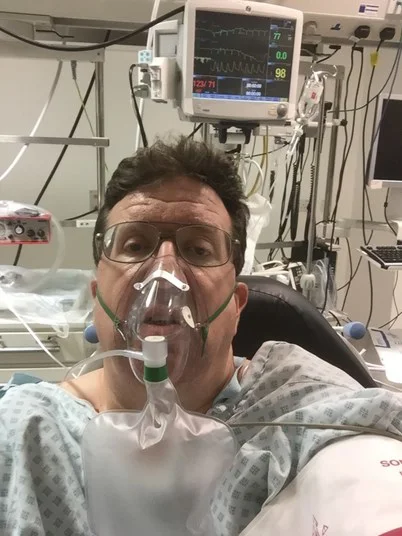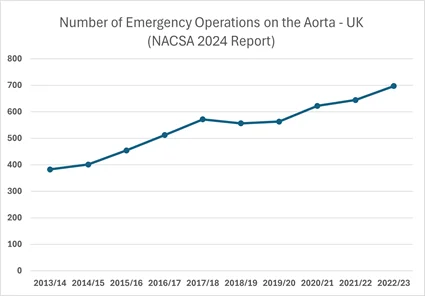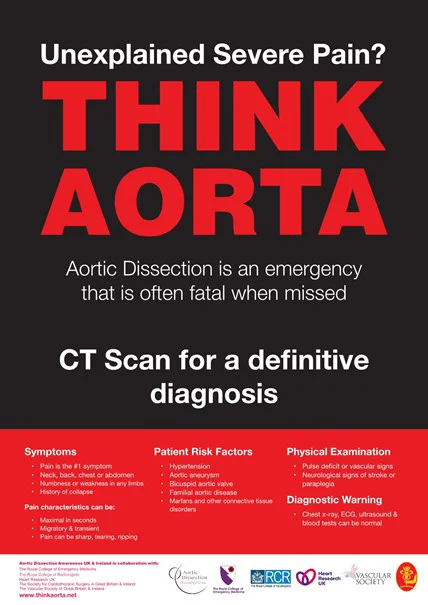The Patient Safety Group (PSG) of the Royal College of Surgeons of Edinburgh (RCSEd) are delighted to lend our enthusiastic support to the sixth World Patient Safety Day (WPSD). This event, established by the World Health Organisation (WHO) in 2019, takes place on 17 September every year. It helps to raise global awareness amongst all stakeholders about key Patient Safety issues and foster collaboration between patients, health care workers, health care leaders and policy makers to improve patient safety. Each year a new theme is selected to highlight a priority patient safety area for action.
The theme set by the WHO for this year’s WPSD is “Improving diagnosis for patient safety”, recognising the vital importance of correct and timely diagnosis in ensuring patient safety and improving health outcomes.
In October 1760, King George II of England became the first documented diagnosis of a death from acute aortic dissection - a tear in the body's main artery, the Aorta, which carries blood from the heart to the brain, limbs and vital organs.
258 years later, in 2018, national patient charity Aortic Dissection Awareness UK and Ireland demonstrated that aortic dissection kills more people in the UK each year than road traffic accidents. A group of aortic dissection survivors and bereaved relatives from the patient charity responded by launching the THINK AORTA campaign, in partnership with the Royal College of Emergency Medicine, the Royal College of Radiologists, the Society for Cardiothoracic Surgery and Heart Research UK.
The campaign led to a national investigation by the UK Government’s Health Services Safety Investigations Body (HSSIB), which concluded that recognition of acute aortic dissection is a national patient safety issue. Significantly, many of the charity’s aortic dissection survivors report that their diagnosis was made by a clinician who had previously been involved in a fatal misdiagnosis. The THINK AORTA campaign set about raising awareness of the diagnosis and providing free, high-impact educational resources, featuring real patient stories, to prime the clinical judgement of healthcare professionals and avoid them having to experience such a tragedy. In response to THINK AORTA and the HSSIB report, in 2021, the Royal College of Emergency Medicine and the Royal College of Radiologists published their first ever joint guidance: “Diagnosis of Thoracic Aortic Dissection in the Emergency Department”.
It is appropriate therefore that we think about acute aortic dissection on World Patient Safety Day 2024, under the theme of “Improving diagnosis for patient safety”. Coincidentally, the date falls just two days before global Aortic Dissection Awareness Day on 19th September. The national patient charity has awarded the hosting of Aortic Dissection Awareness Day UK 2024 to the Royal College of Surgeons of Edinburgh. Over 150 patients, relatives and clinicians will be in Edinburgh for the largest aortic dissection awareness event in the world that day.

The author was diagnosed with an acute Aortic Dissection in the Royal London Hospital Emergency Department.
The key message from patients and relatives about improving this diagnosis is simple and clear: “THINK AORTA -> CT scan to confirm”. The current fashion for systematisation in healthcare has led some Emergency Medicine academics to hypothesise that an algorithmic approach to the diagnosis might be better. However, in the largest study to date, DAShED, clinician gestalt outperformed the combination of an ADD-RS risk score and a D-dimer biomarker test in making the diagnosis. What we know is that Aortic Dissection, “The Great Masquerader”, is currently best diagnosed by educated clinicians exercising well-honed clinical judgement. It’s classic Emergency Medicine, borne out by real patient experience. The challenge for researchers now is that the DAShED study demonstrated a lack of equipoise between clinician gestalt and algorithmic approaches in making the diagnosis. This raises serious ethical and patient safety considerations for any future prospective studies evaluating algorithmic approaches to the diagnosis of acute aortic dissection.

Number of Emergency Aortic Surgery Cases, UK & Ireland (excl. Scotland), 2013/14-2022/23, UK National Adult Cardiac Surgery Audit (NICOR).
The 2024 UK National Adult Cardiac Surgery Audit reported an 82% increase in emergency Aortic surgery cases over the last 10 years. An additional 315 patients a year are now receiving life-saving surgery. In 2023, the auditors noted this increase is not due to greater prevalence of the disease, but to increased aortic dissection awareness and THINK AORTA.

THINK AORTA diagnostic poster.
For the time being, the global patient safety approach to improving the diagnosis of acute aortic dissection should continue to be informed by the patient-led THINK AORTA campaign. This also aligns well with the theme of World Patient Safety Day 2023: “Engaging Patients for Patient Safety”.
Written by Gareth Owens, MSc.(Oxon), MBCS, CITP, Aortic Dissection Survivor, Chair, Aortic Dissection Awareness UK & Ireland. Global THINK AORTA Campaign Lead.

